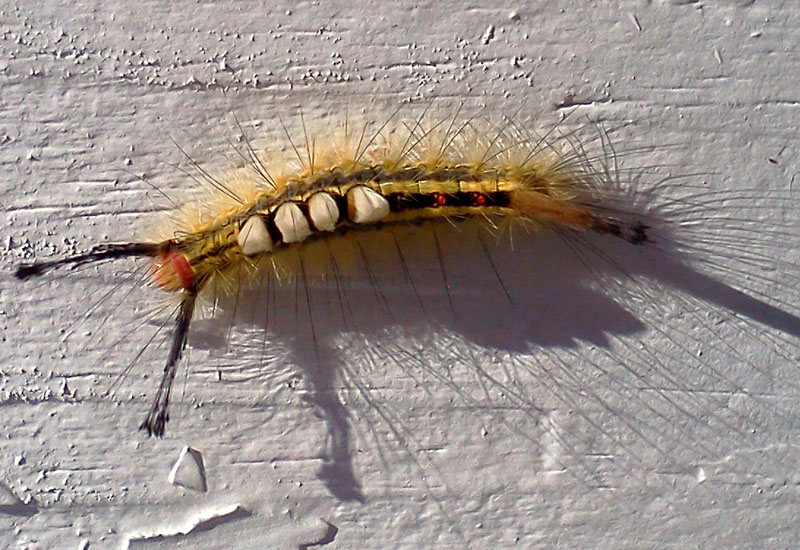Grab your nets and field guides and follow this homeschool mom through a “typical” day!
It was a normal day in the South. The sun shone through the back windows just brightly enough to wake up the two youngest boys before I wanted to get out of bed myself.
We are homeschoolers. Aren’t we supposed to be sleeping in!?
No, not here. The only days that happen are the rare ones when I need to get up and out for an errand and can’t let the kids sleep too long. Well, that’s a side story anyway.
This story is about homeschool science. Science – What is it about this subject that leaves me in a quandary? For starters, there are so many things that can be learned in science; it’s daunting to pick what my kids will need to learn for the year. And of course, I want science to be meaningful to them and that has to be taken into consideration while I’m selecting curriculum. But there are days when homeschool science takes on a life of its own!
INDOOR POND
Like I said, it was a normal Southern morning. I was up at first light, pouring milk over gluten free cereal for my two boys . . . and stepping around the indoor pond in my kitchen! We had so much fun collecting two red eared turtles, various bullfrog eggs, later to hatch into tadpoles, snails, and lily pads for this homeschool science endeavor (We also found a fuzzy caterpillar and took him along with some of his favorite leaves – to be identified later).
Our field guides in hand, we made sure we collected the natural food for each critter. Everything was working out just great – until the turtles ate every last one of the two-hundred plus pollywogs AND the twelve snails! Those turtles sure could eat!
So what was a mama to do? Get more tadpoles. And I knew just the place to get some. Over near our barn was a large mud puddle drying up too fast for those pollywogs to survive. You know that field guide, I mentioned earlier? Yeah, I didn’t remember to bring it with us when we collected these creatures.
THINGS REALLY GET HOPPING!
Fast forward through an hour of scooping all forms of tadpoles out of smelly mud and now they are in my kitchen. You have to picture this just right. They ARE IN MY KITCHEN! Did you know tadpoles with tails look like little T-Rexes and that THEY CAN HOP OUT OF INDOOR PONDS?!?! No – I didn’t either.
We thought these guys were too tiny to be hopping around but one quick flip of the field guide page and we discovered that these cute little pollywogs were spring peepers.
Yup – baby Tyrannosaurus Rex-looking baby toads hopping around my kitchen!
It took me some time and the help of my less squeamish boys to round up all those dinos . . . err, I mean toads. We carefully took the whole ecosystem outside in the shade and resumed our homeschooling adventures.
SCIENCE TAKES FLIGHT
We’d been engrossed for so long that now it was school time already and my extra students were arriving at the door. I went to my school cabinet to retrieve what was needed for the day and WAS IN FOR A SURPRISE! Something was hiding in my cabinet!
What on earth?!? It was a moth. One of those gargantuan ones that has spots that look like creepy eyes and fuzzy antennae. Well it’s beautiful, but not what you are expecting to see when you open a cabinet door for some math cubes! Now what? The first thought everyone had was to look in the caterpillar jar, even though I assured them that it was impossible for that caterpillar we found while catching tadpoles to have gone through metamorphosis already. Sure enough – that caterpillar was still there, waiting to be identified.
We grabbed the field guide and discovered that this wonderful moth was a “Polyphemus Moth,” 3 ½ – 5 ½ inches big, I might add. Our little book told us that this moth is from the silk worm family – and then the light bulb went on! My heart was pumping at a normal rate by now and the palpitations had stopped long enough for my mind to remember – we had a silk worm cocoon from what seemed eons ago. Sure enough – our silk worm cocoon now had a hole in it and the silk work moth was currently attached to my dining room curtain.
A RASH OF LEARNING
I wonder what the other caterpillar is; the one we found while catching pond critters, I puzzled as reached yet again for the field guide.
“Mom? Can you look at this rash I have on my fingers?” my 8 year old asked.
Well, I looked up from what I was just reading – “White-marked Tussock Moth – Contact with the poisonous hairs or spines of the White marked tussock moth caterpillar can cause skin rashes . . . “
And this, Friends, is what I call homeschool science coming to life!
Lisa Blauvelt (with her family and three dogs, two cats, a horse, pony, donkey, two red eared turtles, a fluctuating number of tadpoles and baby fish, and various other creatures collected by her adventurous boys) puts her education degrees to work at her home in the Deep South. There she teaches not only her own children, but others who come to her home to learn. Her decade long experience in teaching children to read will soon be published as a 476 page guide for parents.

